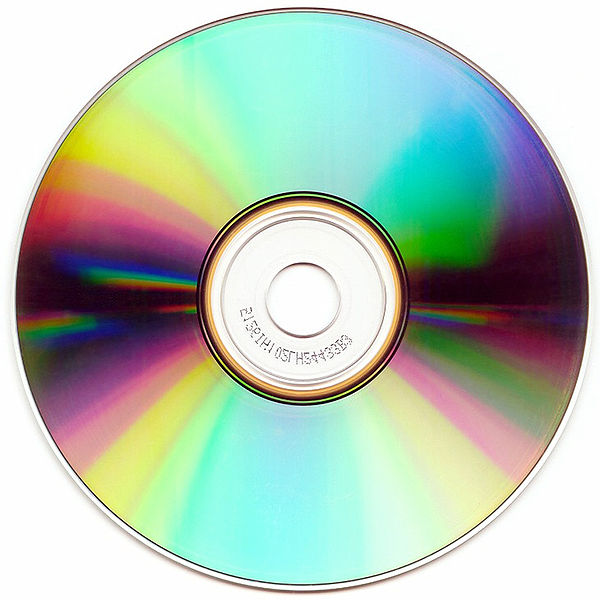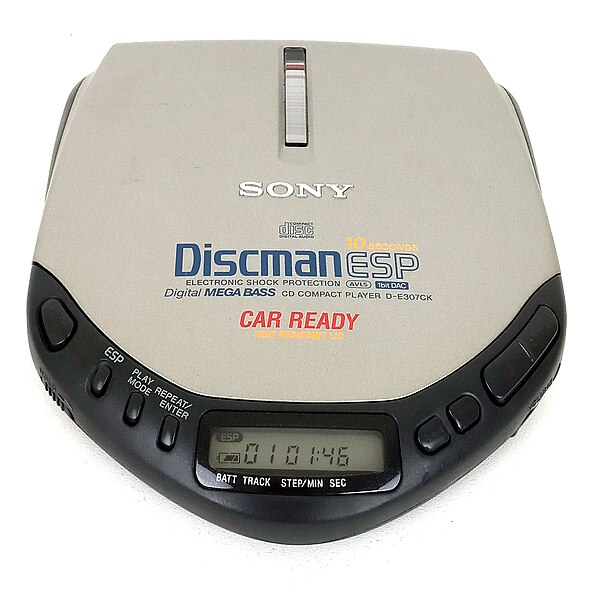Optical disc authoring, including CD, DVD, and Blu-ray Disc authoring, is the process of assembling source material—video, audio or other data—into the proper logical volume format to then be recorded ("burned") onto an optical disc. This act is sometimes done illegally, by pirating copyrighted material without permission from the original artists.
A burnt Sony DVD holding a pirated copy of The Simpsons Movie
The compact disc (CD) is a digital optical disc data storage format that was co-developed by Philips and Sony to store and play digital audio recordings. It uses the Compact Disc Digital Audio format which typically provides 74 minutes of audio on a disc. In later years, the compact disc was adapted for non-audio computer data storage purposes as CD-ROM and its derivatives. First released in Japan in October 1982, the CD was the second optical disc technology to be invented, after the much larger LaserDisc (LD). By 2007, 200 billion CDs had been sold worldwide.
The readable surface of a compact disc includes a spiral track wound tightly enough to cause light to diffract into a full visible spectrum.
Dutch inventor and Philips chief engineer Kees Schouhamer Immink was part of the team that produced the standard compact disc in 1980
Sony Discman D-E307CK portable CD player with 1-bit DAC
Pits and Lands of a compact disc under a microscope





